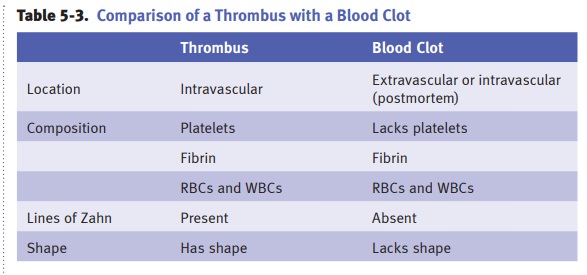Chapter: Pathology: Circulatory Pathology
Thrombosis
THROMBOSIS
Thrombosis
is the pathologic formation of an intravascular fibrin-platelet thrombus during
life. Factors involved in thrombus formation (Virchow’s triad) include:
·
Endothelial injury due to
atherosclerosis, vasculitis, or many other causes
·
Alterations in laminar blood flow
predisposing for DIC occur with stasis of blood (e.g., immobilization);
turbulence (e.g., aneurysms); and hyperviscosity of blood (e.g., polycythemia
vera)
· Hypercoagulability of blood can be seen with clotting disorders (factor V Leiden; deficiency of antithrombin III, protein C, or protein S); tissue injury (postoperative and trauma); neoplasia; nephrotic syndrome; advanced age; pregnancy; and oral contraceptives (estrogen increases synthetic activity of the liver, including clotting factors)

Common
locations of thrombus formation include coronary and cerebral arteries; heart
chambers in atrial fibrillation or post-MI (mural thrombus); aortic aneurysms;
heart valves (vegetations); and deep leg veins (DVTs).
Outcomes
of thrombosis include vascular occlusion and infarctions; embolism;
thrombolysis; and organization and recanalization.
Related Topics